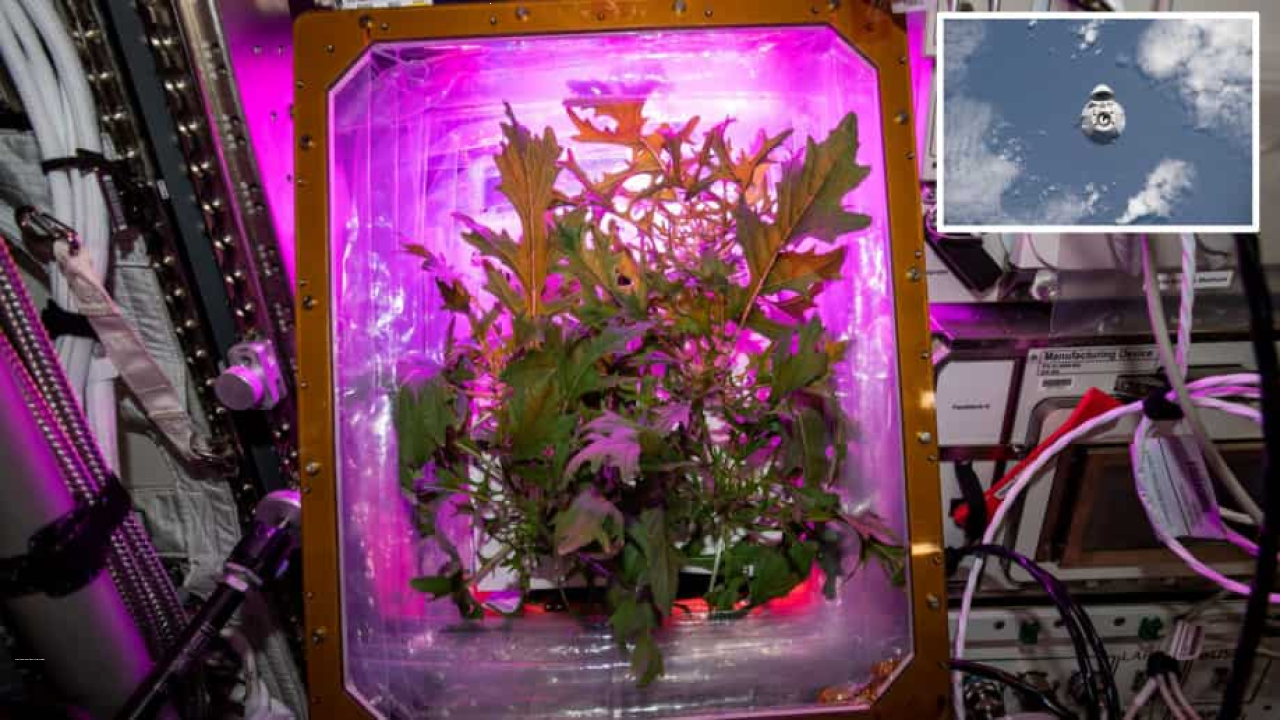Vegetable Production System (Veggie)
On April 15, 2023, SpaceX’s commercial resupply services will transport tomatoes grown on the Vegetable Production System (Veggie) aboard the International Space Station (ISS) back to Earth. These tomatoes were grown as part of the Veg-05 experiment, which probed the impact of light quality and fertiliser on fruit production, microbiological safety, and nutritional value. The aim of the Veggie system on the ISS is to develop a ‘pick-and-eat’ fresh vegetable component to food on the space station, in order to bring fresh produce in the astronauts’ diet.
The Veggie System
The Veggie system is a plant growth unit aboard the ISS. Salad plants such as leafy greens and dwarf tomatoes were cultivated in the Veggie chambers, with each crop grown under two different LED lighting setups. They were grown using plant “pillows” – sacks with a wicking surface filled with soilless substrate and fertiliser. The crops were nurtured by the crew for 104 days, who opened wicks to assist seedlings sprout, provided water, thinned the seedlings, pollinated them, and kept an eye on their health and development.
The Benefits of Fresh Produce in Space
The degradation of vitamins and quality of packaged food over time is a significant challenge for long-duration missions into deep space. To solve this problem, growing a supplemental food crop is a solution. The goal of this study is to establish horticulture standards to obtain high yields of secure, nutritious dwarf tomato fruit to augment a space diet of pre-packaged food. By providing fresh produce to astronauts on long-duration missions, NASA is working towards enhancing the nutritional value of their diet and, in turn, their overall health and well-being.
Month: Current Affairs – April, 2023
Category: Science & Technology Current Affairs


